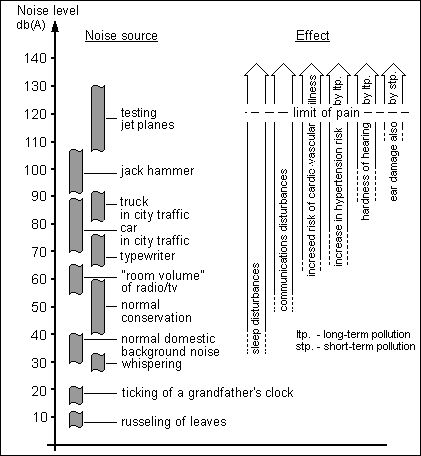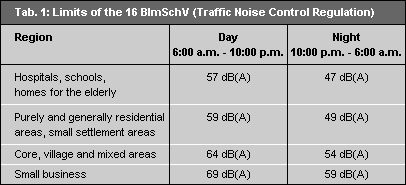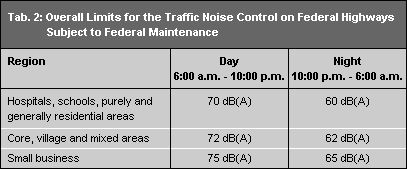Due to their close interrelationship, the present text will explain the two maps 07.02 Traffic Noise and 07.04 for Railway Noise together.
These maps constitute an update of the data of the 1993-‘94 (cf. Map 07.02, Edition 1997). In addition to a representation of noise pollution due to cars, trucks, busses and streetcars, it also contains a separate representation of noise emissions from local rapid-rail and main-line railroad traffic, as well as from aboveground subway line segments.
Noise has become a permanent component of our lives, especially in major cities like Berlin. The various forms of activity in the compact area of a city – residential, commercial, transportation, etc. – almost inevitably lead to conflicts as to what is a reasonable or unreasonable level of noise. Transportation, and particularly the volume of vehicular traffic, is the main cause. During the past few years, the realization that noise is an increasingly serious ecological hazard has therefore gained ever wider acceptance. Noise can have direct or indirect effects on the well-being and even on the health of individuals. The results of noise-effect research indicate that at daytime evaluation levels of between 55 and 60 dB (A), the burdensomeness of traffic noise rises, that it increases substantially between 60 and 65 dB (A), and that health risks presumably start as of 65 dB (A); these are significantly substantiated at daytime levels over 70 dB (A). The noise effect researchers of the Federal Environmental Protection Agency consider nighttime noise impact in excess of 55 dB (A) to be the reason for damaging effects on health, because sleeplessness is a particularly serious burden on the cardiovascular system (cf. Ising et al., 1997).
How Does Noise Occur?
Described physically, sound is caused by vibrating bodies, i.e. by pressure variations within elastic media (gases, liquids, solid bodies). The pressure variations can be caused by impact, by friction, or by streaming gases (the principle of all musical instruments). The pressure variations caused disperse through the ambient medium air at high speed (330 m/s), and can be perceived by the ear if they reach sufficient intensity – if the vibrations per second (measured in hertz [Hz]) are greater than 16 and less than 20,000.
The range of pressure variations perceptible by the human ear (vibration amplitude or sound volume) is between 20 µPa (audio threshold) and 200,000,000 µPa (pain threshold). The micropascal (µPa) is the unit of measurement for this pressure.



